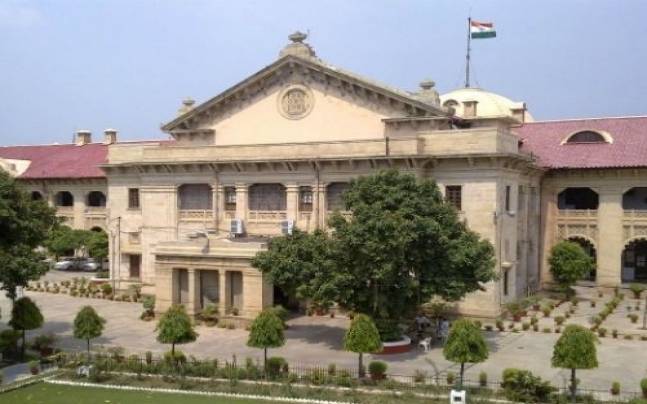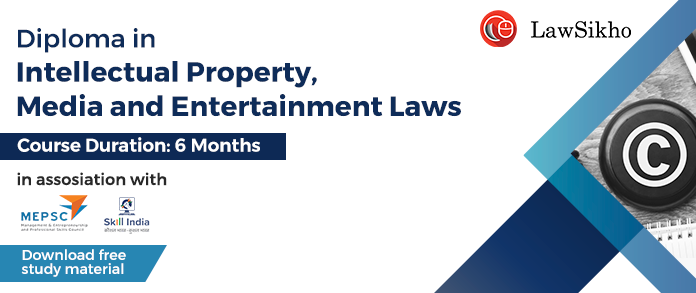This article is written by Raslin Saluja, from KIIT School of Law, Bhubaneswar. The author attempts to highlight the significant portions of the landmark judgment while analysing the same.
Table of Contents
Introduction
The High Court of Allahabad on 12th January 2021 delivered a historic judgment in the case of Smt. Safia Sultana Through Husband Abhishek Kumar Pandey & Anr v. State of Uttar Pradesh (2021). It became the first judgment that tried to deal with the legal asymmetry in the Special Marriage Act, (SMA) 1954. The Single Judge addressed the change required in the present law and put individual choice and autonomy at the forefront.
Facts
In the present case, a Habeas Corpus petition was filed before the High Court of Allahabad by one Mr Abhishek Kumar Pandey (petitioner no. 2) on behalf of his wife, Smt Safia Sultana (petitioner no. 1, detenue). The petitioner no. 1 is a Muslim woman, renamed as Smt. Simran after conversion to Hinduism in order to marry a Hindu man, as per Hindu rituals. After the marriage took place between both the consenting adults with their free will and desire to live together, as per Hindu customs, the father of petitioner no. 1 was not permitting her to live with her husband. Thus the petition claimed that petitioner no. 1 was illegally detained by her father for marrying against his wishes.
The Court then directed the detenue to appear in person before the court in the presence of her father, wherein both of them accepted the aforementioned facts and the father settled with the petitioner no. 1’s decision wishing the couple the best for their future.
The matter could have been dismissed at this stage, but the single judge based on the views expressed by the young couple during their interaction with the court upon their personal appearance dealt with the issue conclusively without being bogged down by the limited scope of procedure in the petition.
Background and issue
The couple had submitted that they would have preferred to solemnize their marriage under the provisions of the Special Marriage Act, 1954 rather than having to convert into Hinduism. However, the requirement of notifying the marriage officers and publishing a 30 days public notice, inviting objections from the public at large before proceeding to marriage under Sections 6 and 7 of the Special Marriage Act would have gathered unnecessary excessive social interference/attention in their free will and invade the privacy of the interfaith couple. Since there are no such impositions in following the personal laws in regard to marriage for publishing notices, inviting objections, petitioner no.1 chose to convert into Hinduism.
The couple stated that similar situations are faced by many individuals in such circumstances also asked for a finding on Sections 4 & 5 of the Special Marriage Act, especially in light of the ongoing cases under the Uttar Pradesh Prohibition of Unlawful Conversion of Religious Ordinance, 2020 (separately under challenge before the Allahabad High Court). They further argued that in consideration of the changing pattern of the society, amendments to SMA as well as the case laws pertaining to freedom of choice, liberty and privacy, these provisions of the SMA require a revisit in order to determine whether the nature of these provisions are mandatory or directory.
The counsel for petitioners further contended that young couples would have preferred to use the Special Marriage Act but they are often not in a position to raise such issues before solemnizing their marriages with a life partner of their choice in order to avoid any unnecessary attention and invasion into their right to privacy. Thus the issue pertained to the constitutional rights of the individuals concerned and their right to make personal choices without the intervention of the state.
Analysis
Justice Vivek Chaudhary agreed to the arguments submitted by the couple and went on to examine and interpret the Central Act i.e. the Special Marriage Act on the touchstone of constitutionality. The relevant sections that were referred are Sections 4 which states the conditions relating to solemnization of special marriages, Section 5 for giving notice of intended marriage, Section 6 for keeping marriage notice book and publication, Section 7 for inviting objection to marriage, Section 8 for the procedure on receipt of the objection, and Section 46 for a penalty for wrongful action of marriage officer.
The Court went back into the history and development of the Act in relation to civil marriages in India before coming to the present-day relevance of the Act. The law was proposed for inter-caste and inter-religion marriages in India for the first time by Sir Henry Maine. It allowed the Indian citizens to marry under the same law instead of their different personal laws. It went through variations ever since 1872 before being revisited and passed after independence in 1954 and continued to be amended from time to time.
Interpretation of the 1954 Act
Thus, the Court had to address the issues of whether the progressing law and the changing social conditions impact the interpretation of Sections 5, 6 and 7 of the Act of 1954 and whether with such changes, the said sections no longer remain mandatory in nature. Furthermore, since the SMA is an ongoing statute, its interpretation should be changing with the present-day situation. To that end, the Court observed that it is their constitutional duty to consider the changes in the social and legal aspects that may have an influence/impact on the interpretation of the provisions of the Act of 1954.
It referred to the case of Satyawati Sharma v. Union of India (2008) wherein the Supreme Court had said that though legislation may be reasonable and rational at the time it was enacted, with change in circumstances, the legislation might become arbitrary and unreasonable and therefore the Court may in its subsequent litigation strike down the same. Similarly, in cases such as Narottam Kishore Dev Verma v. Union of India (1964) & H.H. Shri Swamiji Shri Admar Mutt Etc, v. The Commissioner, Hindu Religious & Charitable Endowments Department (1979), the validity of the respective legislations was in question and the Court observed that the historical consideration upon which these provisions were made may wear out with time and the very foundation of their constitutionality will be destroyed. It referred to the legal maxim “Cessante Ratione Legis Cessat Ipsa Lex”, that is to say, the soul of law is the reason, and when that reason ceases to exist, so does the law itself.
Reports of the Law Commission
As far as the SMA is concerned, the Law Commission Reports reflect the changing circumstances in the society and the need for amending the law in order to adapt to those changes. The amendments that were proposed for the 1954 Act in the 59th Law Commission Report submitted in 1974 acknowledged the changing notion of fairness and justice and their expanding dimensions demanded changes in the structure of law to form a progressive society. That there should not be a huge gap between the letter of law and changing beliefs and customs of the society which dictate the current value system accepted by the community.
Thus, in order to adapt to the changing social norms, further Law Commission reports were submitted proposing changes in the years 2008 and 2012 which were found to be pending for consideration in the present case.
Development of law
Justice Vivek Chaudhary went on to refer and observe a series of judgments starting from 2006. With a similar factual condition, in the case of Lata Singh v. State of U.P. and Anr. (2006), the Supreme Court stated that in a democratic country a person who has attained the age of majority can marry anyone of their choice and is not to be subjected to any violence, instigation or harassment. Other cases that followed were Arumugam Servai v. State of Tamil Nadu (2011) and Bhagwan Dass v. State (NCT of Delhi) (2011).
Later in 2014, in Indian Woman Says Gang-Raped on Orders of Village Court Published in Business and Financial News Dated 23-1-2014 in Re, the Court declared that the right to freedom of choice in marriage is a fundamental right and inherent aspect of Article 21 of the Indian Constitution. In Asha Ranjan v. State of Bihar (2017), the Court again stated that choosing a life partner is based on individual choice and is a legitimate constitutional right recognized under Article 19 of the Constitution and must not succumb to the concept of group thinking. This similar aspect was discussed at length in Shakti Vahini v. Union of India and Ors., (2018).
In another Habeas Corpus petition in the case of Shafin Jahan vs. Asokan K.M. and Others (2018), the Court emphasized constitutionally guaranteed freedom to be greater than societal values and therefore the individualistic entity of a person cannot be destroyed. An individual’s liberty and autonomy are recognized under the Constitution and marriage is one such exclusive domain wherein a state/law cannot dictate their will.
Throughout all these precedents, the Supreme Court had been repeatedly emphasizing the role of individual autonomy in questions of marriage and held it to be inherent in Articles 19 and 21 of the Constitution.
Right to privacy
The Single Judge then moved to examine the Puttaswamy (2017) privacy landmark judgment of the nine-judge bench in some detail in order to glean the scope of the right to privacy. That life and personal liberty cannot be separated and are the foundational pillars of the Constitution. The right to privacy emerges from them and includes personal choices governing the way of life and preservation of personal intimacies, family, marriage, procreation and sexual integration are all intrinsic for exercising such rights. The Court followed up by critically noting that in Navtej Johar v. Union of India (2018), it had been clarified that, when examining a law for constitutionality, what was important was not its object or form, but its effect. Since it is not the object/form of law that impairs the rights of the citizens but the effect of it which allows the courts to interfere and provide a remedy. Thus, the draftsmen intention is not determinative rather the effect or operation of law is which can infringe the fundamental rights.
After combining all the propositions as declared in the various cases since Lata Singh to Navtej Johar, personal liberty and privacy has been long defined and that;
- There is constitutional protection for an individual who can exercise autonomy in making a choice, and
- the constitutionality has to be considered by the effect of law.
This led to the conclusion by the Judge that SMA needs to be interpreted in a way that its reporting requirements would have to be read as voluntary, not mandatory:
It referred to interpretations of Section 6 & 7 read along with Section 46 and states that sections are to be implemented in a manner upholding the fundamental rights of people instead of violating them. If upon first plain reading, it is found that they are mandatory then they would be invading fundamental rights of liberty and privacy. Since there are no similar reporting requirements under the various personal laws, the Court observed there was no reason to make the process under SMA more protective/onerous.
Judgment
The Court concluded that:
- The requirement of notice publication under Section 6 and inviting public objections under Section 7 are not mandatory but are only directory in nature and will be of effect only upon the parties’ request.
- If the individuals out of their own free will apply to solemnise their marriage under SMA then they can opt for publication of notice in public under Section 6 which by virtue of their free will has been applied and therefore not violative of their fundamental rights.
- The court made it optional for the parties under Section 5 for the parties to make a request in writing to the Marriage Officer for publication of the notice.
Conclusion
This judgment acts as an important judicial pushback to the increasing interference of the state in matters of marriage including empowering social groups. It has an authentic articulation of liberty as it addresses and signifies a larger element present in the implementation of these laws. Though these concerned sections were present in the SMA from the beginning, they have become a base for future interference (as in the UP ordinance notice requirement).
In a related case which remains pending, a plea was filed before the Supreme Court regarding the requirement of the parties to marriage to disclose their personal details for public scrutiny before thirty days of the date of marriage. Another instance includes various complaints being lodged regarding uploading of e-notice for intended marriage pursuant to which the Kerala Government also decided to stop this practice of uploading scanned copies of notice of intended marriage.
The requirement of public notice and invitation to objection signifies that the matters of most personal and intimate nature involving the exercise of choice are not for an individual to make but requires society’s acceptance too. This keeps society at a higher and dominant position for having control over people’s life choices. This also leaves the concerned individuals with two choices only, either to give up their freedom or be ready to face the societal pressure and persecution which are against the value of constitutional democracy.
References
- https://www.lawyersclubindia.com/articles/mandatory-publishing-note-invitation-object-to-marriage-pursuant-special-marriage-act-infringes-privacy-13552.asp
- https://indconlawphil.wordpress.com/2021/01/13/giving-freedom-some-breathing-space-the-allahabad-high-courts-sma-judgment/
- https://www.thequint.com/news/law/llahabad-high-court-special-marriage-act-public-30-day-notice-objections-not-mandatory-right-to-privacy#read-more
LawSikho has created a telegram group for exchanging legal knowledge, referrals, and various opportunities. You can click on this link and join:












